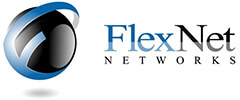Workplace stress has increasingly been focused on as a prescient problem for businesses, with an increased focus on identifying the causes and mitigating the impacts. A recently published patent from Microsoft helps to demonstrate how seriously this is now taken… although it also begs the question: do we really need technology’s help to identify when we feel stressed?
Microsoft’s Solution for Anxiety
Filed in October of 2019, and finally being published a short time ago (as of this writing), Microsoft’s patent describes their “Emotion Detection From Contextual Signals For Surfacing Wellness Insights” technology. By collecting and compiling data from assorted sources, including biometrics from fitness trackers and smart watches and usage data from Microsoft’s Office software, an employee “anxiety score” can be generated and alert the employee of their emotional change. The platform would then provide recommendations to help them wind back down, like taking a break or a brief walk.
For instance, let’s say that James has an important meeting coming up, and is starting to feel anxious about it. This anxiety could manifest itself in a few different ways—perhaps increased typos and spelling errors are popping up in the emails he’s composing, or the email is taking longer than it generally would to write up. If James’ behaviors suggest that he’s feeling anxious, a notification will pop up to inform him of his stress and how it was calculated, along with a recommendation based on his schedule to help him relieve this stress.
This Technology May or May Not Be Implemented
Let’s make something clear: filing a patent is much different than including certain capabilities in a product or service, so there’s no guarantee that these features will ever appear in Microsoft’s software solutions.
Having said that, it does show that software developers—even those of as much renown as Microsoft—are more seriously considering the importance of employee wellness and how impactful it can be to the workplace.
This Isn’t All Microsoft Has Done, Either (Along With Other Software Developers)
This patent is one more in a line of solutions that Microsoft and other software developers have designed to help promote the wellbeing of their employees.
- Microsoft has also introduced MyAnalytics, an individualized wellness and productivity tool, as well as Viva, a Teams-based tool that combines the benefits of MyAnalytics with Workplace Analytics, an analytics tool intended to deliver insights to managers and business leaders.
- Cisco has implemented People Insights into its Webex collaboration platform, with data broken down by individual employees, the entire team, as well as the workplace as a whole.
- Google has also made plans to make similar data available to workers in the interest of self-awareness and improvement.
Do People Really Need An Application to Tell Them That They’re Stressed?
At first glance, this all may sound a little silly. Is (yet another) notification really the best way for one of your employees to find out that they’re feeling anxious?
In so many words: it very well could be.
While we aren’t saying that all of your team members are incapable of identifying their own emotions, they may not feel totally comfortable in responding to them in the appropriate way—in this case, stepping away from a task for a moment to decompress. This kind of feature could potentially not only help make them more aware of their own mental state in the workplace, it signals that their needs are important, that it is okay to take a break if they need one. With the kind of stress that so many have felt over this past year, this message has perhaps never been so pertinent.
What do you think? Is this kind of feature going to be more of a priority for businesses moving forward? Is it something that you’d want to focus on? If so, Flexnet Networks LLC is here to help. Our services and solutions are designed to help your team remain as productive as possible and provide them with the support they need, whenever they need it. Find out what we can offer your team by calling (432) 520-3539 today.


Comments